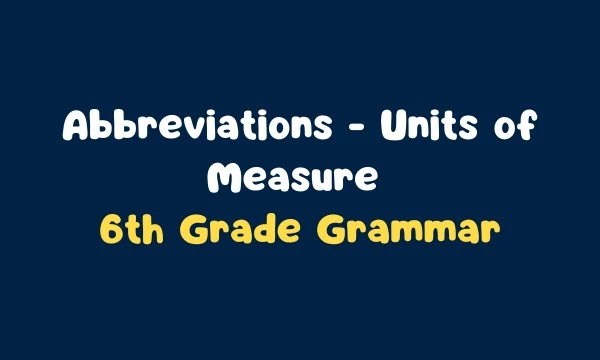Abbreviations - Units of Measure - 6th Grade Grammar
Introduction
In today's fast-paced world, effective communication has become more important than ever before. To be able to communicate effectively, one must have a solid understanding of the basics of the language, including abbreviations, units of measure, and grammar. While these may seem like simple concepts, they are often overlooked or misunderstood, leading to miscommunication and errors in both written and verbal communication.
This blogger blog post aims to shed light on the importance of understanding and using abbreviations, units of measure, and 6th-grade grammar correctly. In the following sections, we will delve into each of these topics in detail, providing rules, examples, and common mistakes to avoid.
Through this blog post, readers will gain a deeper understanding of these language basics, ultimately improving their communication skills and avoiding errors that can lead to misunderstandings. Whether you are a student, professional, or simply someone who values effective communication, this blog post is an essential read.
Remember!
- Use abbreviations for units of measure. Most abbreviations are the same for singular and plural units.
Examples
in.—inch(es)
km.—kilometer(s)
L—liter(s)
ft.—foot (feet)
kg.—kilogram(s)
oz.—ounce(s)
hr.—hour(s)
Abbreviations - Units of Measure Worksheet - 6th Grade GrammarWrite each sentence.
Abbreviate each word in parentheses ( ).
- My cousin is now 6 (feet) tall.
- I weighed 7 (pounds), 2 (ounces) at birth.
- We worked for 7 (hours) in a row yesterday.
- My tomato plant grew 8 (inches) last week.
- It took us 3 (hours) to drive 130 (kilometers).

